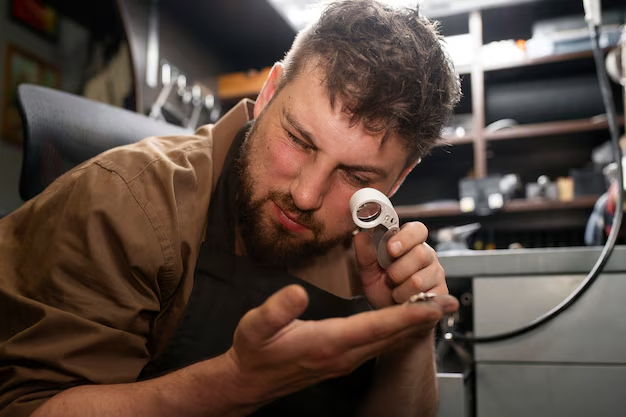Troubleshooting Guide for Your GE Refrigerator: Solutions and Tips
A refrigerator breakdown can throw a wrench into your daily routine, especially if you rely on perishable food storage. If you own a GE refrigerator, knowing the ins and outs of troubleshooting can be a game-changer. This guide will walk you through common GE refrigerator problems and how to address them, with clear, actionable steps.
Understanding Common Refrigerator Issues
GE refrigerators, like any other electronic appliance, can face a variety of issues over time. Before diving into fixing your refrigerator, it’s crucial to identify what might be wrong. Common problems include:
- The refrigerator is not cooling properly
- The unit is making strange noises
- Water is leaking inside or outside
- The ice maker isn't working
- The refrigerator is constantly running
Each of these problems can have different causes and solutions. Keeping an eye out for signs of trouble early on can prevent more severe issues down the line.
Diagnosing Cooling Problems
One of the most frequent concerns is that the refrigerator isn't cooling properly. Without sufficient cooling, food can spoil quickly, posing a health risk.
Check the Thermostat
Ensure that the thermostat is set to the appropriate temperature. Sometimes, the thermostat can be inadvertently adjusted. Ideally, refrigerators should be set between 37°F and 40°F, while the freezer should be at 0°F.
Condenser Coils Needs Cleaning
Steps to Clean Condenser Coils:
- Unplug your refrigerator. Safety first!
- Locate the condenser coils. Often found at the back or the bottom.
- Use a coil brush or vacuum. Remove dust and debris that may hinder performance.
🔧 Quick Tip: Clean the coils every six months to ensure optimal performance.
Inspect the Door Seals
Door seals are crucial for maintaining the internal temperature. Conduct the dollar bill test: Close the refrigerator door on a dollar bill. If you can pull it out easily, the seal may be faulty. Replacing door seals can improve efficiency and performance.
Dealing With Unusual Noises
Strange noises coming from your refrigerator can be alarming. These sounds can originate from different areas and components.
Identify the Source
Common areas to check:
- Evaporator Fan: If the noise emanates from the inside, this fan might need attention.
- Condenser Fan: Typically at the back or underneath the refrigerator.
- Compressor: Located at the bottom back, sometimes needs professional inspection if noisy.
Make sure the refrigerator is level, as an uneven surface can cause unnecessary vibrations or rattling.
Addressing Water Leaks
Water leaks can stem from multiple causes, and identifying the source is necessary for effective repairs.
Inspect the Drain Pan
A cracked or overflowed drain pan is a common culprit. After unplugging the unit, remove the drain pan and check for any visible damage or clogs.
Examine Water Supply Lines
For models equipped with water dispensers or ice makers, checking the water supply lines is crucial. Ensure that the lines are not kinked and that connections are secure.
Troubleshooting the Ice Maker
An ice maker not functioning properly can be particularly inconvenient. Here's how to troubleshoot:
Examine the Water Inlet Valve
If your ice maker isn’t producing ice, the water inlet valve might be at fault. Since these valves can’t be repaired, consider a replacement if faulty.
Reset the Ice Maker
Many GE models have a reset button or manual reset feature. Refer to your GE refrigerator's manual for model-specific instructions.
Prevention and Maintenance Tips
Regular maintenance can prevent many common issues from occurring in the first place.
Regular Maintenance Checklist:
- 🧽 Clean the interior regularly to prevent odor build-up and bacteria.
- 🔧 Inspect door seals for signs of wear and keep them clean.
- 🌀 Check and clean condenser coils bi-annually.
- 🛠️ Verify thermostat settings periodically.
Maintaining your GE refrigerator extends its lifespan and ensures consistent performance.
When to Call a Professional
While many issues can be resolved with DIY techniques, some problems require expert intervention.
Professional Services Are Recommended When:
- You suspect an electrical issue and feel unsafe handling it.
- The refrigerator continues to malfunction after DIY attempts.
- Your unit is under warranty and service repair is covered.
📞 Pro Tip: Keep GE service center numbers handy for prompt assistance when required.
Summary Table for Common Problems and Solutions
| Issue | Possible Cause | Solution |
|---|---|---|
| Not cooling properly | Thermostat misadjusted | Adjust the thermostat |
| Dirty condenser coils | Clean the coils with a coil brush or vacuum | |
| Strange noises | Misaligned refrigerator | Level the refrigerator |
| Faulty fan | Inspect and replace fan if necessary | |
| Water leaks | Overflowed drain pan | Empty and clean the drain pan |
| Loose or kinked water lines | Check and secure water supply lines | |
| Ice maker not working | Faulty water inlet valve | Replace the inlet valve |
| Reset needed | Perform a manual or button reset |
Final Thought
Understanding your GE refrigerator and being equipped to troubleshoot common issues can save time and prevent frustration. Regular maintenance and early diagnosis are key to ensuring your refrigerator operates smoothly. Empowered with knowledge, you are now ready to tackle and resolve common problems, ensuring your appliance continues to serve your household efficiently.
